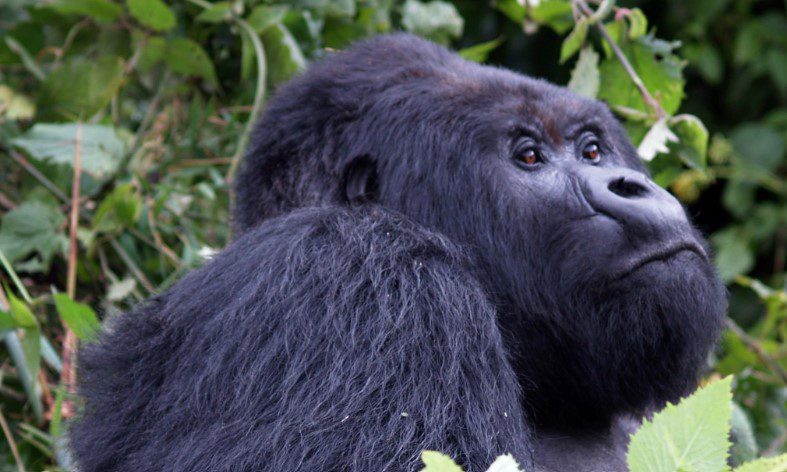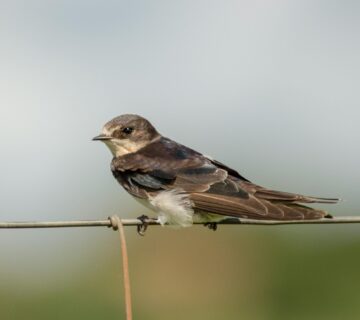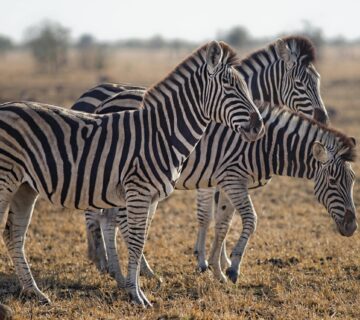Can I See the Big Five in Rwanda?
Imagine standing in the heart of the African wilderness, surrounded by a vast expanse of untamed beauty, where the air is crisp, the landscapes are breathtaking, and wildlife roams freely in their natural habitat. This is Rwanda a land of stunning contrasts, where the rolling hills and mist-covered mountains create an unforgettable backdrop for some of the most sought-after wildlife encounters. For many, the idea of witnessing the Big Five in their natural environment is a dream come true. But what if you’re heading to Rwanda, a country that’s often known for its mountain gorillas and awe-inspiring landscapes, and wondering: Can I see the Big Five in Rwanda?
Yes, you absolutely can.
While Rwanda is most famous for its gorilla trekking in Volcanoes National Park, the country also offers incredible opportunities to see the Big Five the lion, leopard, elephant, buffalo, and rhinoceros. Rwanda’s commitment to conservation and the preservation of its wildlife has made it a rising star in Africa’s safari scene. Whether you’re a seasoned wildlife enthusiast or a first-time safari-goer, Rwanda promises experiences that are not only thrilling but deeply meaningful.
The Big Five: A Brief Introduction
Before diving into where you can spot the Big Five in Rwanda, let’s take a moment to reflect on what makes these animals so special. The Big Five lion, leopard, elephant, buffalo, and rhinoceros were originally coined by hunters, referring to the five animals that were the most dangerous to hunt on foot. Today, they represent some of the most iconic and sought-after animals on the planet, symbolizing Africa’s diverse ecosystems and rich wildlife.
While each of these species is incredible on its own, together, they form a powerful testament to the natural world’s resilience and beauty. Seeing them in the wild is an experience that stirs emotions, challenges your understanding of nature, and leaves you with unforgettable memories. And in Rwanda, you can witness this magic firsthand.
Rwanda’s National Parks: The Gateway to the Big Five
Rwanda’s relatively small size belies its immense diversity of landscapes and ecosystems, making it a prime location to spot the Big Five. The country’s national parks, especially Akagera National Park, offer an exceptional environment for safaris. Here’s a look at what each park offers:
1. Akagera National Park: The Big Five Sanctuary
Located in the eastern part of Rwanda, Akagera National Park is the undisputed heart of safari adventures in the country. Covering over 1,000 square kilometers of savannah, woodland, and wetlands, Akagera is home to an impressive range of wildlife, including the Big Five.
Lions: Akagera is one of the few places in Rwanda where you can see lions roaming freely. In 2015, lions were successfully reintroduced to the park, and since then, the population has been thriving. Their majestic presence is a highlight for visitors seeking the thrill of spotting these apex predators.
Leopards: Leopards are elusive and often difficult to spot, but Akagera offers one of the best opportunities in Rwanda to see this beautiful, solitary cat. They are most active during the night, so a night safari might be your best bet for encountering them.
Elephants: Akagera’s herds of elephants are a sight to behold. These gentle giants are commonly seen grazing or drinking at the park’s many waterholes, particularly around the early mornings and late afternoons when the temperatures are cooler. Their majestic presence is a reminder of the natural wonders of Rwanda.
Buffaloes: Akagera is also home to large herds of buffalo, often seen in the park’s open savannah. These powerful creatures are not just an iconic species of the Big Five but also a crucial part of the park’s ecosystem, helping to shape the landscape with their grazing habits.
Rhinoceroses: While rhinos are not native to Akagera, the park has made great strides in rhino conservation. In 2017, the first rhinos were reintroduced to Akagera after an absence of more than a decade. The reintroduction program is part of Rwanda’s broader conservation efforts, and today, both black and white rhinos can be spotted in the park.
Akagera National Park offers both guided game drives and boat safaris, making it one of the best places in Rwanda to see the Big Five. The park’s diverse ecosystems ranging from lakes to savannahs also provide a stunning backdrop for your wildlife adventure.
2. Volcanoes National Park: A Different Kind of Wilderness
While Volcanoes National Park is primarily known for its mountain gorillas, the park also offers a range of wildlife, including the elusive leopard and various species of antelope. However, it’s important to note that the Big Five, particularly lions, are not present in Volcanoes National Park. For those specifically looking to experience all five animals, Akagera is the more appropriate destination.
Nevertheless, the park’s contribution to Rwanda’s wildlife heritage cannot be overstated. The park’s stunning volcanic peaks and mist-covered rainforests provide a unique setting for trekking gorillas — an experience that is deeply intertwined with Rwanda’s identity. But if you’re keen on spotting other wildlife, you might have the chance to see golden monkeys, buffaloes, and a variety of bird species.
A Sustainable Safari Experience
One of the most remarkable aspects of seeing the Big Five in Rwanda is how the country has woven conservation into the very fabric of its tourism industry. Rwanda is often seen as a leader in sustainable tourism, with a strong emphasis on wildlife protection and community involvement. By visiting Rwanda’s national parks, you’re not only supporting wildlife conservation but also contributing to the livelihoods of local communities who depend on eco-tourism for their well-being.
In Akagera, for instance, the park’s staff are deeply involved in both conservation efforts and community development. Visitors are encouraged to participate in educational programs, learn about the park’s wildlife, and understand the importance of preserving these animals for future generations.
Moreover, the country has a zero-tolerance policy for poaching, and significant efforts have been made to ensure that wildlife populations are protected and allowed to thrive. This dedication to conservation is evident in the successful reintroductions of lions and rhinos, as well as the park’s commitment to sustainable tourism practices that minimize environmental impact.
The Best Time to See the Big Five in Rwanda
Rwanda offers year-round opportunities to see the Big Five, but the best time for a safari largely depends on your preferences. The dry season, from June to September, is the most popular time to visit Rwanda. During this period, the weather is mild, and animals are more likely to gather around water sources, making them easier to spot. The dry season is also ideal for game drives, as the terrain is more accessible.
The wet season, from March to May, sees fewer tourists, and while some of the roads may be less accessible, it’s also a time when the park’s landscapes are lush and green. This season is perfect for birdwatchers, as migratory species are abundant.
Final Thoughts: A Journey of Discovery
Seeing the Big Five in Rwanda is more than just a safari experience; it’s a profound journey of discovery. It’s a chance to connect with nature in its purest form, to witness the power and beauty of Africa’s iconic wildlife, and to support the vital conservation efforts that are helping to preserve these incredible species.
In Rwanda, the Big Five aren’t just a list of animals you tick off they’re part of a living, breathing ecosystem that’s being carefully nurtured for future generations. Whether you’re in the savannahs of Akagera or the misty mountains of Volcanoes National Park, each encounter with Rwanda’s wildlife is a moment of awe, a story unfolding in front of your eyes.
So, if you’ve ever wondered whether you can see the Big Five in Rwanda, the answer is a resounding yes. And when you do, you’ll not only experience the thrill of these magnificent creatures but also be a part of something far greater: the preservation of Rwanda’s wildlife and its rich natural heritage for years to come.





